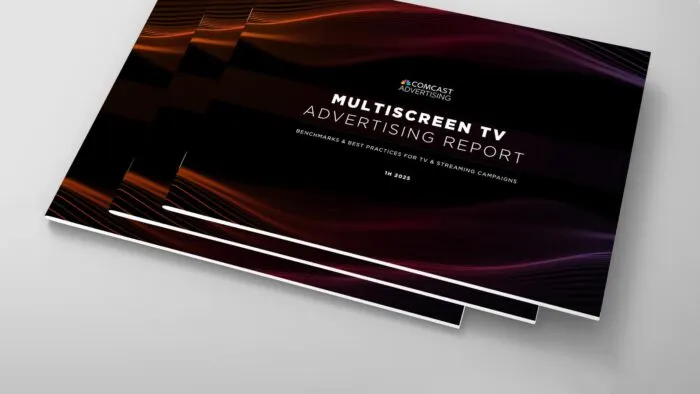According to recent reports, political ad spend continues its upward trajectory with the 2024 election cycle seeing the most spend in any cycle to date – hitting a record-breaking $11 billion.1 And while advertising spend shows no sign of slowing down, political advertisers are always looking for the most effective ways to allocate their budget to reach potential voters as they fragment across screens and platforms.
Comcast Advertising analyzed over 10 billion impressions from the 2024 elections to glean insights from the most successful campaigns and help inform advertisers how to drive results in the next election cycle and beyond.
Here are the six strategies that every political advertiser should consider when trying to reach and connect with potential voters:
1. Start with a data-driven audience
Efficiency and precision are of top importance for political campaigns, and, to obtain that, advertisers must start by selecting the right audience. Depending on campaign goals, this could mean targeting audiences based on party affiliation, likelihood to vote, causes they support, or even campaign exposure levels. That is why it’s crucial to lean into the data insights available.
While voter segments and industry lists are critical, political advertisers should look for opportunities to use deterministic data, or authenticated information linked to a household such as physical address, to help reach the audience that matters most to them and engage them in a way that is tailored to them. When political advertisers know their audience, they can deliver ads that better resonate with them, which can help improve effectiveness; relevant ads have been found to drive +2.4X higher engagement and +2x higher unaided recall.2
Once you know your audience, you can begin building a robust campaign that delivers results.
2. Build a foundation with traditional TV
While everyone may feel like streaming has taken over traditional TV, the reality is that audiences are still watching it: over 6 hours per day are spent watching traditional TV among likely voter households that subscribe to a pay TV service.3 Since traditional TV ads run in high-quality, brand-safe premium inventory, it helps lead to increased unaided recall, which can have a significant impact on potential voters. In fact, more than 50% of voter households consider TV important when it comes to evaluating candidates.4
As a time-tested and long-trusted medium, political advertisers should look to traditional TV as the foundation of their campaigns to ensure their campaign’s message reaches the audiences that matter most—and sticks with them through election day.
3. Expand reach with a multiscreen strategy
Traditional TV is a powerful delivery vehicle on its own but in a heavily fragmented video landscape, a multiscreen TV advertising strategy, inclusive of traditional and streaming, is non-negotiable. When it comes to maximizing reach, traditional and streaming TV work better together. Streaming is especially effective in delivering hard-to-reach households with little to no-TV viewing.
In the last election cycle, campaigns using a multiscreen approach saw +24% higher frequency with little duplication between the two tactics emphasizing their strength as a pair.5 Seventy-five percent (75%) of households were unique to traditional TV, while 21% of households were unique to streaming.5
A multiscreen strategy allows political advertisers to follow likely voters across screens and platforms—wherever and however they watch.
4. Balance reach & frequency
As an election nears, political ads flood the screens and airwaves. And while reach is essential to driving election outcomes, overexposure can adversely impact campaigns and lead to ad waste. According to a survey, 50% of voters thought there were too many political ads,6 but, on average, nearly 2 out of 5 households receive little to no candidate messaging.7
To avoid political ad fatigue and boost campaign effectiveness, political advertisers can utilize deterministic data insights to optimize targeting and balance reach and frequency. This can also help inform if investments should be reallocated from overexposed to underserved households to ensure their message is cutting through the noise and getting to the right people.
5. Layer on addressable advertising
In political advertising, it is not just about how many viewers you reach—it is about reaching the right viewers, at the right time, with the right message. Addressable advertising will allow you to do just that. Best as a complement to an existing multiscreen campaign, addressable uses deterministic identifiers to serve targeted ads to specific households – across traditional and streaming TV – allowing for greater audience precision.
Political campaigns implementing an addressable strategy see increased reach and frequency among their most important voter audiences. In fact, when incorporated into a multiscreen campaign during the 2024 election cycle, addressable was found to deliver a third of all unique household reach, and 73% higher target frequency.8 Layering on addressable to a base campaign can help political advertisers get the most out of their campaigns.
6. Overlay programmatic delivery
As viewing shifts more to streaming, political advertisers are following suit with their media investments. An analysis found that in 2024, demand for programmatic was +600% higher compared to the previous presidential election cycle.9 Programmatic can help elevate political ad campaigns with efficiency by helping to fill in the gaps by providing additional reach and increased geographic capabilities which can be critical in more local elections.
Since programmatic solutions provide an opportunity to expand audience reach, political advertisers should look to partners that offer programmatic capabilities to enable additional targeted reach, transparency, and real-time measurement and optimization, and consider it as an overlay to foundational multiscreen campaigns.
As political advertisers gear up for the next election cycles, they should keep in mind that most voters are also viewers. Understanding how audiences interact with content can help them develop the best strategies to reach viewers while they’re enjoying their favorite shows and media. These approaches are essential for maximizing effectiveness and achieving success, so it’s important for political advertisers to focus on the audiences that include the potential voter households they want to connect with.
To learn more about how to effectively connect candidates and causes with potential voters, download the latest report, Winning Strategies: Advertising Lessons from the 2024 Election Cycle.
Sources:
1. NBC News, “The Final Price Tag on 2024 Political Advertising: Almost $11 Billion,” 2024.
2. FreeWheel, “Making the Ad Experience More Relevant,” 2024.
3. Comcast Aggregated Viewership Data. Likely Voter HHs. Full Footprint. 2024.
4. Comcast and Dynata study of N=231 Comcast Ad Exposed households and N=166 Unexposed households, February 2024.
5. Comcast Aggregated Viewership Data combined with Ad Exposure Data from TV + streaming campaigns. Filtered to Political Advertisers. 2024.
6. Comcast Advertising study in partnership with Kantar. Q3 2024, consumer survey responses, N=1240.
7. Comcast Internal Data, Aggregated LENS Data. Audience segment: Low, Medium, and High Exposed Households.
8. Comcast Aggregated Viewership Data combined with Ad Exposure Data from TV + streaming campaigns + Audience Addressable campaigns, political advertisers, 2024.
9. FreeWheel, 2024 and 2020. Political category impressions delivering on Streaming.



